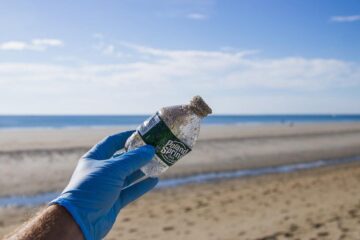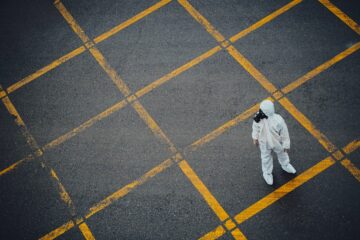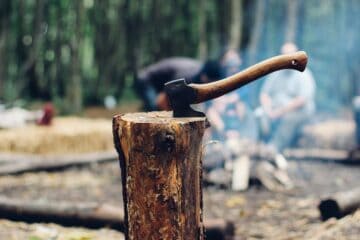Bulletproof vests have become an essential piece of equipment for outdoorsmen, preppers and hunters. But what materials are bullet proof vests made of? There is a variety of materials used in the construction of bulletproof vests ranging from metals to synthetic fabrics. Each material has its own advantages and disadvantages which must be considered when selecting a vest that best suits your needs. In this article, we will examine the various types of bulletproof vests and their advantages and disadvantages so that you can make an informed decision when selecting a vest to best suit your needs.
Types of Bulletproof Vests
Bulletproof vests are essential for any outdoorsman, prepper, or hunter who may face a hazardous situation. There are three main types of bulletproof vests: soft armor vests, hard armor vests, and concealable vests. Each type has its own advantages and disadvantages that should be taken into consideration when choosing the best option for your needs.
Soft Armor Vests are made from flexible materials such as Kevlar or Twaron fibers which absorb the impact of bullets and fragments upon contact. This type of vest is lightweight and comfortable to wear while providing an adequate level of protection against most handguns and other low-powered weapons. Despite its light weight and comfort, soft armor vests are not designed to withstand high-powered rifle or automatic weapon fire due to their limited stopping power.
Hard Armor Vests provide superior levels of protection compared to soft armor thanks to their use of ceramic plates or steel plates instead of flexible fabrics like Kevlar or Twaron fibers. These plates can stop even the highest powered rifle rounds from penetrating the wearer’s body with ease; however they also add significant weight making them uncomfortable to wear over long periods time without proper support systems built into them. Additionally, these types of bulletproof vests tend to be more expensive than their softer counterparts due to their increased cost in production and maintenance requirements needed for upkeep over time.
For those desiring covert protection, concealable vests offer a comfortable solution that still effectively defends against lower powered rounds. These vests utilize thinner layers of material combined with multiple layers placed one on top another in order to remain hidden beneath clothing while still being able to stop lower powered rounds from penetrating the wearer’s body if necessary. This makes them perfect for hunters or outdoorsmen who may unexpectedly encounter dangerous wildlife during their trips into nature’s wildness. Keywords: Ballistic Protection, Concealable Vests, Comfort, Security, Thinner Layers of Material, Multiple Layers Placed One On Top Another
A person’s individual requirements should determine the selection of a bulletproof vest for their protection. Different materials can be used to create bulletproof vests that offer varying levels of protection; let’s take a look at some popular options.
Materials Used in Bulletproof Vests
Bulletproof vests are made to guard against bullets and other flying objects. The materials used in the construction of bulletproof vests vary depending on the level of protection required. Kevlar and Twaron fibers, ceramic plates, and steel plates are some of the most commonly used materials in bulletproof vest construction.
Kevlar and Twaron Fibers:
These synthetic fibers are strong yet lightweight, making them an ideal material for use in bulletproof vests. They have a high tensile strength which helps to absorb energy from impacts while still remaining flexible enough to be comfortable when worn. Kevlar is more widely available than Twaron but both offer similar levels of protection against handgun rounds as well as fragments from explosives or shrapnel.
Ceramic Plates:
Ceramic plates can provide additional protection beyond what is offered by Kevlar or Twaron fibers alone. Boron carbide or silicon carbide are usually the materials of choice for creating ceramic plates, which then have a metal matrix such as aluminum or titanium alloy added to them for increased strength and stability. Ceramic plates can protect against higher caliber rifle rounds but they also tend to be heavier than fiber-based options so they may not be suitable for all applications where mobility is important such as law enforcement officers who need to move quickly during active shooter situations.
Steel plates offer maximum protection against bullets but they come at a cost – weight. Steel plate armor is much heavier than either fiber-based options or ceramic plating so it’s usually only used when there’s no other option due to its bulkiness and lack of flexibility when compared with lighter alternatives like Kevlar or ceramic plating systems. Additionally, steel has limited ability to stop fragmentation from explosives since it tends to shatter upon impact rather than absorbing energy like softer materials do, so it should only be considered if you need maximum protection from rifle rounds without any regard for mobility considerations.
Bulletproof vests are made from a variety of materials, such as Kevlar and Twaron fibers, ceramic plates, and steel plates. Each material offers unique advantages to the wearer in terms of protection against bullets and fragments while providing improved comfort and mobility. Next, let’s consider the perks that bulletproof vests bring to their users.
Advantages of Bulletproof Vests
Wearing a bulletproof vest provides protection against bullets and fragments, is lightweight and flexible for improved comfort and mobility, making them the ideal choice for outdoor safety.
Protection Against Bullets and Fragments:
Bulletproof vests provide an extra layer of protection from ballistic threats like bullets and shrapnel. They are made with special materials that absorb the energy from a projectile impact, dispersing it throughout the vest instead of transferring it to your body. Bulletproof vests can be a lifesaving safeguard against projectiles, preventing injury or fatality in hazardous scenarios.
Bulletproof vests are crafted to be lightweight and pliable, enabling freedom of movement while still shielding wearers from projectiles. The material used in most bulletproof vests is usually Kevlar or Dyneema which has been engineered to be strong yet light enough to allow unrestricted movement when worn over clothing or other gear such as backpacks or hydration packs.
Improved Comfort and Mobility:
In addition to providing excellent protection, bulletproof vests also offer improved comfort compared to traditional body armor solutions due to their lightweight design. This makes them perfect for long hikes through rugged terrain where bulky protective gear could cause discomfort after extended periods of wear time. Furthermore, their flexibility allows for increased mobility when moving quickly in tight spaces such as dense forests where dodging obstacles can be difficult without full range of motion provided by a well-designed bullet proof vest. The flexibility also allows for comfortable female body armor.
Overall, bulletproof vests provide reliable defense against projectiles while remaining comfortable enough for extended use during activities like hunting trips or hiking expeditions into unknown areas that may contain hostile elements who could threaten your safety with firearms. Investing in one will ensure you’re always ready no matter what situation arises on your journey into nature’s wildest places.
The advantages of bulletproof vests are clear; they offer protection against bullets and fragments, lightweight and flexible designs for improved comfort and mobility. However, there are some disadvantages to consider when using these vests such as their expensive cost of production and maintenance, limited protection against high-powered weapons, and potential health risks from wearing the vest.
Disadvantages of Bulletproof Vests
The expense of fabricating and maintaining bulletproof vests is a significant disadvantage connected with them. Bulletproof vests are costly to acquire and require regular maintenance, such as replacing or repairing broken components like ceramic plates exposed to bullets/fragments and Kevlar fibers degraded by wear/tear & UV light. For instance, ceramic plates used in many vests need to be replaced after they have been exposed to multiple rounds or impacts from bullets or fragments. In addition, Kevlar fibers that make up the bulk of a vest can degrade over time due to wear and tear as well as exposure to ultraviolet light. As such, owning a bulletproof vest can become quite costly over time if proper maintenance isn’t performed regularly.
Bulletproof vests offer limited protection against high-powered weapons such as rifles and shotguns, thus necessitating an understanding of their limitations before relying on them in emergency situations. Bulletproof vests may be intended to shield from handguns and other low-velocity firearms, but they offer very little protection against rifle rounds which fly at much higher speeds than pistol bullets. Therefore it’s important for those who plan on using body armor for self-defense purposes understand its limitations when it comes to stopping powerful weapons like rifles and shotguns before relying on it solely during an emergency situation.
Wearing a bulletproof vest can pose potential health risks, such as heat exhaustion from the extra weight and sweat accumulation during physical activity in hot weather, or discomfort due to ill-fitting areas. The most common risk involves heat exhaustion caused by the added weight combined with intense physical activity while wearing the vest – especially during hot weather conditions where sweat accumulation can occur quickly underneath all that material. Additionally, some people may experience discomfort due to rubbing or chafing caused by certain parts of the vest being too tight around sensitive areas like your neck or armpits – something that can easily be avoided through proper fitment prior to purchasing any particular model.
FAQs in Relation to What Are Bullet Proof Vests Made of
What material are bullet proof vests made of?
Bullet proof vests are made of a material called Kevlar. It is an extremely strong and lightweight synthetic fiber, which is five times stronger than steel by weight. The fibers are woven together to create a fabric that can stop bullets from penetrating the body. This type of vest has been proven to be effective in stopping most handgun rounds as well as some rifle rounds depending on the level of protection chosen. In addition, modern bulletproof vests also have additional layers such as ceramic plates or metal plating for added protection against high-powered rifles and other ballistic threats.
Bulletproof vests are made from two elements:
Kevlar and Dyneema. Kevlar, a synthetic fiber woven into fabric to form the base of the vest, and Dyneema, an ultra-high molecular weight polyethylene that adds extra bullet protection, have both been rigorously tested for their effectiveness in stopping bullets while still allowing flexibility and comfort. Both materials have been tested extensively for their ability to stop bullets without compromising comfort or mobility. Together they provide maximum protection against bullet penetration and fragmentation.
What is the science behind bulletproof vests?
Bulletproof vests are typically made of a combination of materials that provide ballistic protection. Kevlar, a lightweight synthetic fiber created to absorb and disperse the energy of bullets or other projectiles, is commonly used in bulletproof vests. Other materials, such as ceramic plates, may be employed to augment bulletproof vests for enhanced defense against high-velocity projectiles. Bulletproof vests can offer varying levels of protection depending on the type and thickness of the material used in their construction.
Are bullet proof vests made of plastic?
No, bullet proof vests are not made of plastic. Bullet proof vests are typically constructed with multiple layers of woven fibers such as Kevlar or Twaron, which provide protection against bullets and other forms of ballistic attacks. Bulletproof vests are not made of plastic because it cannot disperse the force generated by a high-velocity projectile. Moreover, plastic cannot be employed for a bulletproof vest since it is unable to diffuse the energy from an extremely rapid projectile across a large area as compared to other materials used in such vests.
Conclusion
In conclusion, bulletproof vests are a great way to protect yourself in dangerous situations. Different materials such as Kevlar, ceramic plates and polyethylene fibers are used to make bulletproof vests of varying types for varied purposes. Ultimately, the kind of vest and its material should be carefully chosen based on the advantages and disadvantages each provides. Ultimately, no matter what type or material you choose for your bullet proof vest it will offer an added layer of protection from potential harm.


